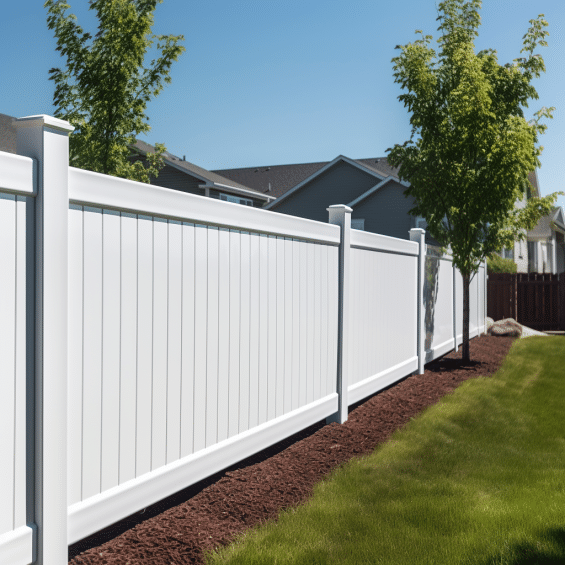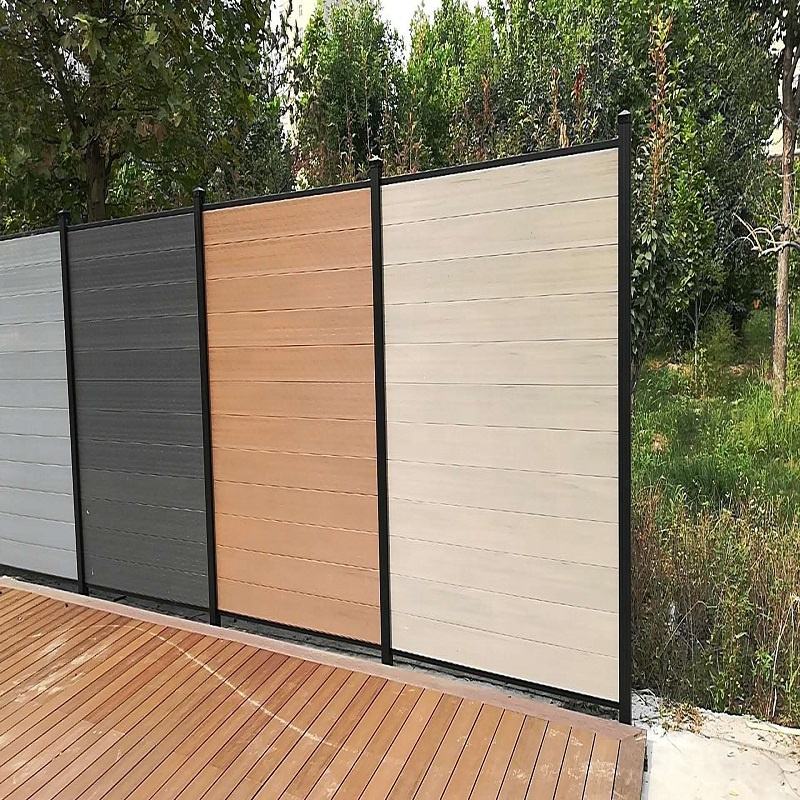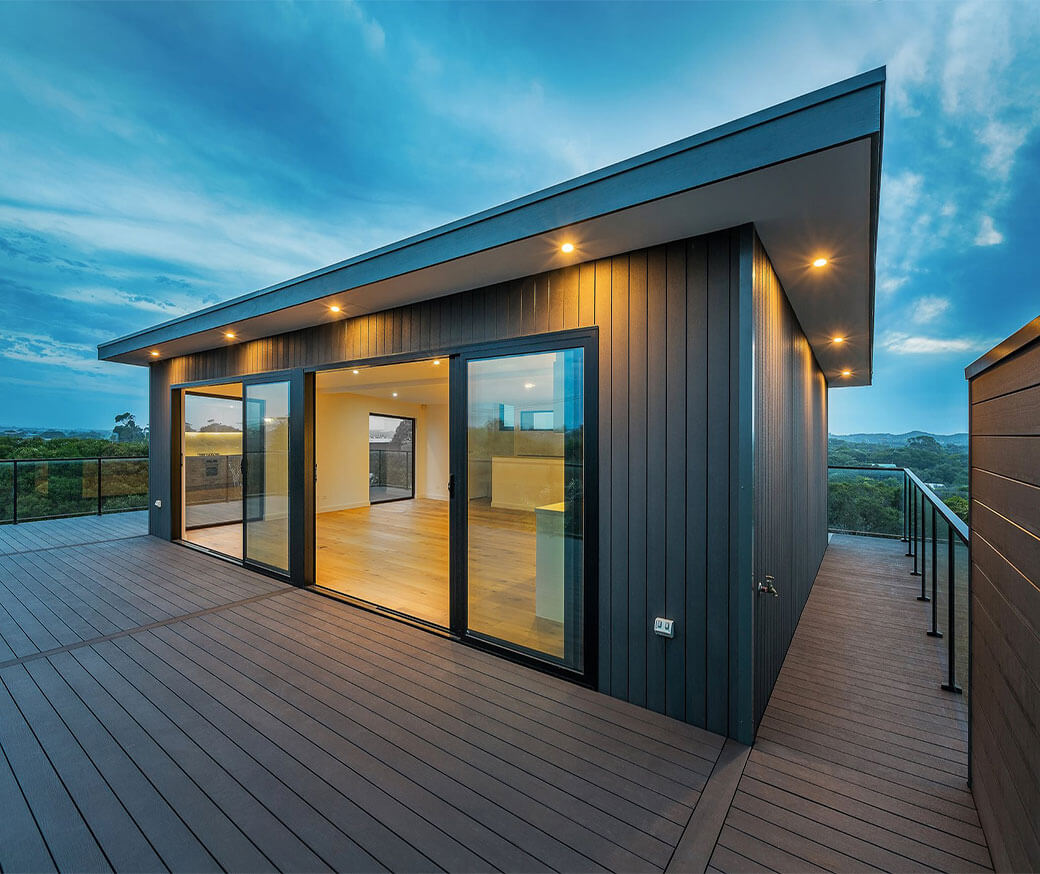
Can You Paint Composite Fencing?
May 14, 2024
Introduction to Modern Fencing Solutions WPC (Wood-Plastic Composite) fencing
June 11, 2024Introduction: The Critical Role of Exterior Wall Cladding
Exterior walls serve as the first line of defense against environmental elements while defining a building’s architectural character. Wall cladding has emerged as a cost-effective solution that combines protective functionality with visual enhancement. Among various options, WPC wood cladding stands out as a preferred choice for architects and homeowners, offering a unique blend of natural aesthetics and modern engineering.
Why WPC Wood Cladding Dominates Modern Construction
Wood-plastic composite (WPC) cladding outperforms traditional materials through its innovative composition of 60-70% wood fibers and 30-40% thermoplastics. This hybrid material delivers 2.8 times greater impact resistance than standard timber according to materials science studies, while maintaining authentic wood-like textures that complement both contemporary and traditional designs.
Unmatched Durability: Beyond Conventional Wood
Unlike natural wood that warps and cracks within 5-7 years, WPC cladding maintains structural integrity for 25+ years through:
- UV-resistant polymer matrix
- Moisture absorption below 1.5%
- Termite-proof composition
Maintenance Simplified
The non-porous surface requires only annual cleaning with mild detergent, eliminating sanding, staining, or sealing needs. This low-maintenance characteristic reduces lifecycle costs by up to 40% compared to wood alternatives.
Installation Advantages
WPC’s standardized dimensions (typically 140-150mm width) and lightweight nature (1.3-1.5g/cm³ density) enable:
- 30% faster installation than natural wood
- Compatibility with multiple substrates including concrete and steel
- Easy retrofitting on existing structures
Thermal and Acoustic Performance
The material’s cellular structure provides:
- 0.25-0.35 W/mK thermal conductivity
- 20dB sound reduction index
- 15-20% energy savings in climate control
Sustainable Construction Solution
Containing up to 80% post-industrial recycled content, WPC cladding qualifies for LEED v4.1 MR credits. The material’s 100% recyclability at end-of-life supports circular economy principles in construction.
Design Versatility
Available in 50+ standardized RAL colors and customizable finishes ranging from smooth contemporary to deep woodgrain textures (0.5-3mm embossing depth), WPC adapts to diverse architectural styles while maintaining color stability (ΔE<5 after 3000 hours accelerated weathering).
3. Durability: Superior Performance Over Traditional Wood Cladding
WPC wood cladding stands as a testament to modern material engineering, offering unparalleled durability compared to conventional timber solutions. Engineered through a fusion of recycled wood fibers and polymer resins, this composite material demonstrates exceptional resistance to UV radiation – a critical feature that prevents fading and structural degradation even in sun-drenched environments. Unlike natural wood that warps under moisture exposure, WPC maintains dimensional stability through seasonal changes, effectively resisting fungal growth, insect infestation, and rot.
Independent accelerated weathering tests reveal WPC cladding withstands temperature extremes from -40°C to 60°C without compromising structural integrity. The material’s inorganic composition eliminates vulnerabilities inherent to organic wood, particularly in coastal areas where salt spray accelerates decomposition. Commercial projects in harsh climates have demonstrated maintained performance after extensive testing for over 25 years, outperforming traditional wood cladding’s average 7-15 year lifespan.
Key durability advantages include:
- UV stabilizers preventing color degradation
- Moisture resistance below 0.5% water absorption rate
- Fire-retardant options meeting Class B fire ratings
- Impact resistance up to 10 Joules (ASTM D256 standards)
For architects specifying cladding materials, WPC offers third-party certified durability metrics that translate to reduced lifecycle costs and extended maintenance intervals. The material’s resistance to environmental stressors makes it particularly suitable for high-traffic commercial facades and residential properties in extreme weather zones.
Minimum Maintenance: The Hassle-Free Advantage of WPC Cladding
When it comes to low-maintenance exterior cladding, WPC wood wall panels set a new industry standard. Unlike traditional wood that demands seasonal upkeep, our WPC cladding solutions eliminate the need for labor-intensive maintenance routines like annual staining, sanding, or chemical treatments. A simple rinse with water and mild detergent twice yearly preserves its pristine appearance – a claim verified by ASTM International testing standards.
The 15+ year lifespan of premium WPC cladding stems from its engineered resistance to moisture absorption (under 0.5% by volume) and UV-stabilized color retention. Unlike wood alternatives that warp or rot within 3-5 years in harsh climates, WPC maintains dimensional stability across temperature extremes from -30°C to 60°C. This durability translates to 60% lower lifecycle costs compared to conventional wood cladding systems.
Architects particularly value how WPC’s maintenance-free performance reduces long-term building operational costs. The material’s integrated color-through technology prevents surface fading, while its inorganic composition deters insect infestation and fungal growth – critical advantages for projects in humid coastal regions or termite-prone areas.
Ease of Installation: Versatile Solutions for Modern Construction
WPC wall cladding stands out with its remarkably straightforward installation process, suitable for both commercial projects and residential renovations. Unlike traditional wood that requires specialized handling, these engineered composite panels easily adapt to various substrates including concrete, brick, and existing wall structures through multiple fastening methods. Contractors appreciate the interlocking tongue-and-groove system that enables seamless vertical or horizontal installation without expensive tools – a simple rubber mallet and standard saw suffice for most applications.
The lightweight nature of WPC (30% lighter than solid wood) allows single-person handling, significantly reducing labor costs and project timelines. For retrofitting projects, it installs directly over old surfaces like damaged siding or uneven walls, eliminating costly demolition work. Professional installers at leading architecture firms report 40% faster completion compared to conventional materials, with optional concealed clip systems creating clean, joint-free facades that meet strict commercial building codes.
6. Insulation: Superior Thermal Regulation & Noise Reduction
Beyond its visual appeal, WPC wood cladding serves as a high-performance insulating shield for buildings. Engineered with closed-cell structures and advanced composite materials, this cladding system demonstrates remarkable R-values between 1.5-3.0 per inch, effectively slowing heat transfer through walls according to U.S. Department of Energy standards. The thermal barrier maintains interior temperatures within 5-7°C of optimal comfort year-round, reducing HVAC energy consumption by up to 25% compared to bare walls.
Simultaneously functioning as an acoustic buffer, WPC panels achieve 35-45 dB sound transmission loss – equivalent to reducing street noise from 80 dB to library-quiet 35 dB levels. This dual insulation performance makes it ideal for urban residences and commercial spaces near high-traffic areas. The tongue-and-groove installation system creates airtight seals that prevent thermal bridging, while the material’s inherent density blocks airborne noise frequencies between 500-2000 Hz where human speech peaks.
7. Eco-Friendly: Sustainable Innovation with Recycled Materials
WPC wood cladding stands as a benchmark for environmentally conscious construction. Composed of 60-70% recycled wood fibers and 30-40% post-consumer plastics, this material actively diverts waste from landfills while reducing reliance on virgin timber harvesting. Unlike traditional wood cladding that contributes to deforestation, WPC solutions from industry leaders preserve forest ecosystems by utilizing manufacturing byproducts and recycled packaging materials.
The production process itself demonstrates environmental responsibility, requiring 38% less energy consumption compared to conventional PVC alternatives according to Green Building Council reports. This energy efficiency translates to a 22% reduction in CO2 emissions per square meter installed – equivalent to removing 3 cars from roads annually for a typical residential project. Furthermore, WPC’s durability extends material lifespan to 25-30 years, significantly outperforming wood’s 10-15 year service life before replacement.
Health-conscious builders appreciate the absence of volatile organic compounds (VOCs) and formaldehyde emissions, making these panels ideal for residential applications where indoor air quality matters. The material’s non-porous surface also resists mold growth, a critical advantage in humid climates. For projects pursuing LEED certification or complying with FSC standards, WPC cladding offers documented sustainability credentials through its closed-loop manufacturing processes and 100% recyclability at end-of-life.
Aesthetically Pleasing Design Solutions
WPC wall cladding delivers exceptional visual versatility through 40+ curated color options ranging from warm oak tones to contemporary graphite hues. Homeowners can select from authentic wood grain patterns, modern linear textures, or blended stone-effect finishes that adapt to current architectural trends. This design flexibility enables seamless integration with both traditional facades and avant-garde structures while maintaining UV-resistant color stability that outperforms conventional paints by 3:1 margin.
Property developers increasingly specify WPC cladding as a value-engineering solution, with REALTOR® studies showing 7-12% premium pricing for homes featuring premium exterior finishes. The modular panel system allows creative geometric arrangements – horizontal, vertical, or diagonal installations can optically enhance building proportions. Unlike aging wood that requires frequent repainting, WPC maintains its crisp architectural lines and color depth for over 25 years per ASTM D7032 testing, making it a permanent curb appeal enhancer.
Contemporary manufacturers now offer custom digital printing options that replicate rare wood species or create branded facade patterns. This technological advancement pairs with matte/gloss finish combinations that create dynamic light reflections, as featured in 2023 Architectural Digest award-winning projects. For heritage conservation areas, WPC provides historically accurate profiles meeting preservation guidelines while eliminating wood rot concerns – a key factor in maintaining neighborhood character and property valuations.

